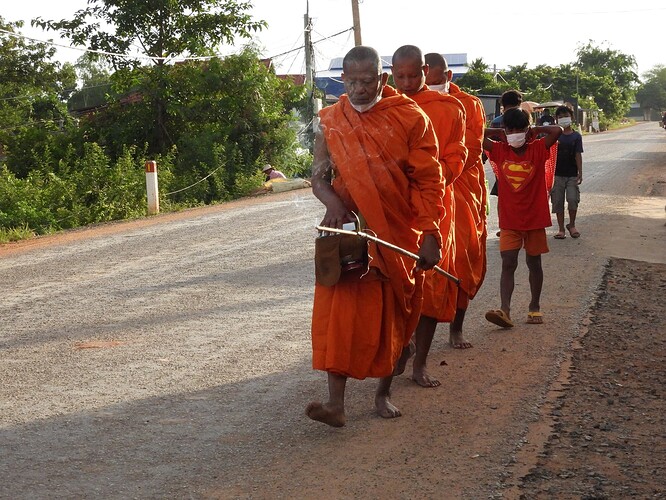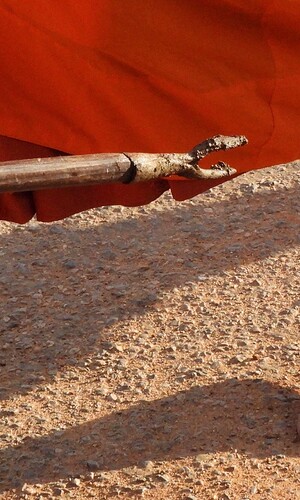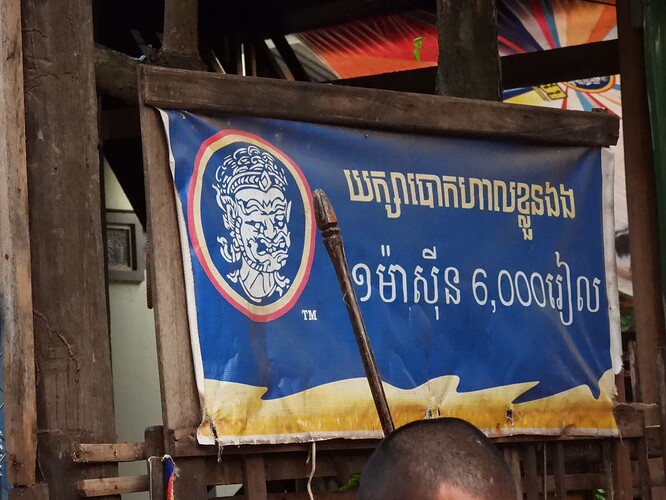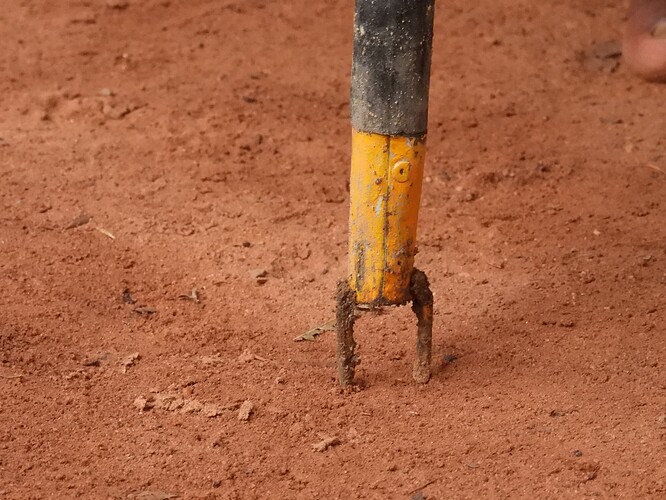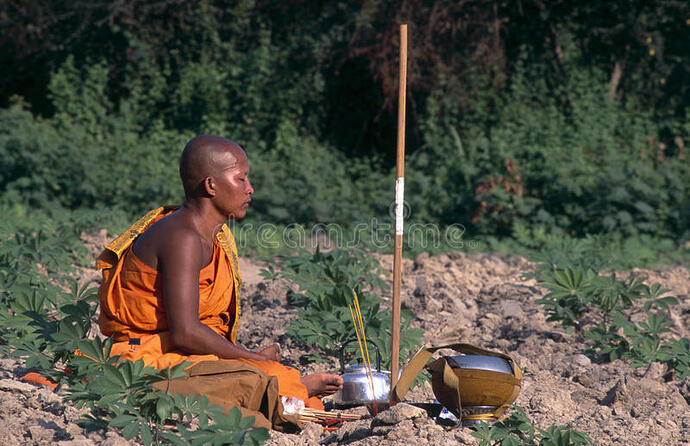Buddhism in Cambodia began with Mahayana and some of its influences persist, so the spear cannot be discussed without eventually examining that subject. For example the bident tradition may have been imported from Java 1000 years ago. With Mahayana comes the influence of male and female energies:
“While women likely have an easier access into this truth, the sacred feminine is not defined by gender. Essentially, it is a deeply receptive way of being in relationship with a living world, where everything is consecrated by an indwelling consciousness. Even the molecules in the air are pregnant with life giving energy. Trees, plants, rocks, animals, and the beings around us are all part of one living gestalt. When we tune into that, then the Eros energy of undifferentiated love suffuses our being.
Unfortunately, our current worldview has de-souled the living world, rendering it inanimate, dead, and devoid any sacredness. Patriarchy, and patriarchal religions, of which Buddhism is one, fears the energy of Eros due to its connection with sexual power, birth, and the instinctual realm of primal feeling.”—-Internet
In Theravada generally there are two episodes which although not explicitly described as such, seem to point to eros energy, that is the Buddha’s invocation of the earth goddess to gain victory over Mara’s hordes, and the offering of milk rice before awakening. As described in a previous post the former is a popular iconographic subject in Cambodia. These are not explicitly referred to as eros situations because the Theravada teaching is focussed on the level of transcendent right view, the attainment of nibbana. Mundane right view on the other hand deals at the level of conventional reality driven by cause and effect, where the goal is more fortunate rebirth, easily understood by common people:
"And what is the right view with effluents, siding with merit, resulting in acquisitions? 'There is what is given, what is offered, what is sacrificed. There are fruits & results of good & bad actions. There is this world & the next world.”—MN 117
The attraction between male and female is a very strong force and perceived by ordinary people in SE Asia to extend into the deva realm, and is the basis of their religion because its effects are observable and exhibit an unseen connection. So when they make offerings etc they expect to see results. That is cause and effect, mundane right view, and the monks have been drawn into supporting this in their involvement in public rituals.
The ordinary Cambodian is occupied with supporting either male or female energy in their daily activities and speech and that is their basic motivation, not material acquisition as in the west. In that way they believe they are contributing to the cosmic harmony. The eros energies are kept separate except on the occasion of marriage, when the carefully protected energies are released. As stated in the extract above, the west may have to re-engage with this tangible level of awareness as a means to solve the environmental crisis.
